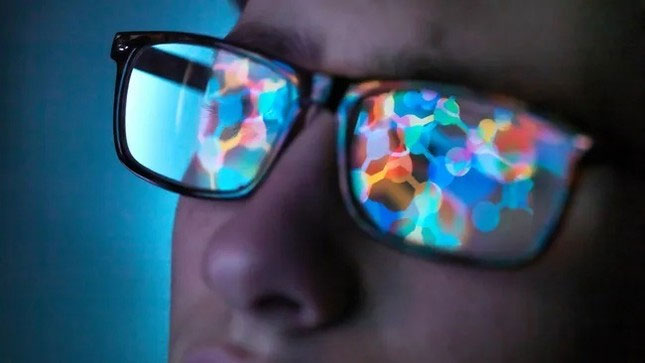Above all, watch 3D right on regular eyeglasses
Building on current holographic technology, a team of optical display experts has invented a way to improve 3D displays small enough to work in regular eyeglasses.
Researchers have invented a device small enough to fit in a regular pair of glasses and that can solve a long-standing trade-off in holographic displays - resulting in the most realistic holograms ever .
Holograms are typically created using projection devices called spatial light modulators (SLMs) . The light emitted through the device changes the shape of the light wave at a specific distance, creating a visible surface.

Researchers are even closer to realistic holograms. (Photo: Andrew Brookes).
But because SLM is made from liquid crystal/silicon (LCoS) display technology, current holographic technology is suitable for narrow fields of view like flat panel displays. The viewer must be placed within a narrow viewing angle – anywhere outside of it and the light will refract too much, making it invisible.
The angle can be widened for clear images, but fidelity is lost because current LCoS technology does not have the number of pixels available to maintain the image over a wider field. This means that holograms tend to be small and clear or large and diffuse, sometimes disappearing altogether if the viewer looks in a direction far enough away from the angle from which it was visible.
Felix Heide, assistant professor of computer science at Princeton, USA and lead author of the study, explained the importance of perspective. 'To get the same experience, you need to sit in front of a cinema screen,' he said.
The new technology can be projected on regular eyeglasses and they are also so small and light that the wearer does not need tools such as bulky VR headsets.
The discovery will also make applications that use holograms – such as in VR and AR displays – more popular because the display technology can be easier to use, lighter and ultra-thin.
The Princeton team's key innovation was to create a second optical element that works with the SLM , filtering its output to expand the field of view while preserving detail and stability in the hologram with image quality. image loss is much lower.
- Learn eyeglasses through the ages
- Eyeglasses designed exclusively for dieters
- Watch out for broken eyes because of glasses watching 3D movies
- When glasses combine with electronic technology
- Wearing pink eyeglasses helps to observe more
- Habits help the brain to clear up
- Glasses self-turning pages
- Meaning of icons on Apple Watch
- Protective eyeglasses and self-change
- Why when watching live football, have a fast TV, have a slow TV?
- Google is about to come out with a laptop
- Create crystals that turn darkness into light
 The US company is about to build a supersonic passenger plane of 6,000km / h
The US company is about to build a supersonic passenger plane of 6,000km / h Japan develops avatar robot as in fiction film
Japan develops avatar robot as in fiction film Australia tested the world's first mango picking robot
Australia tested the world's first mango picking robot America develops technology to separate water from animal waste
America develops technology to separate water from animal waste